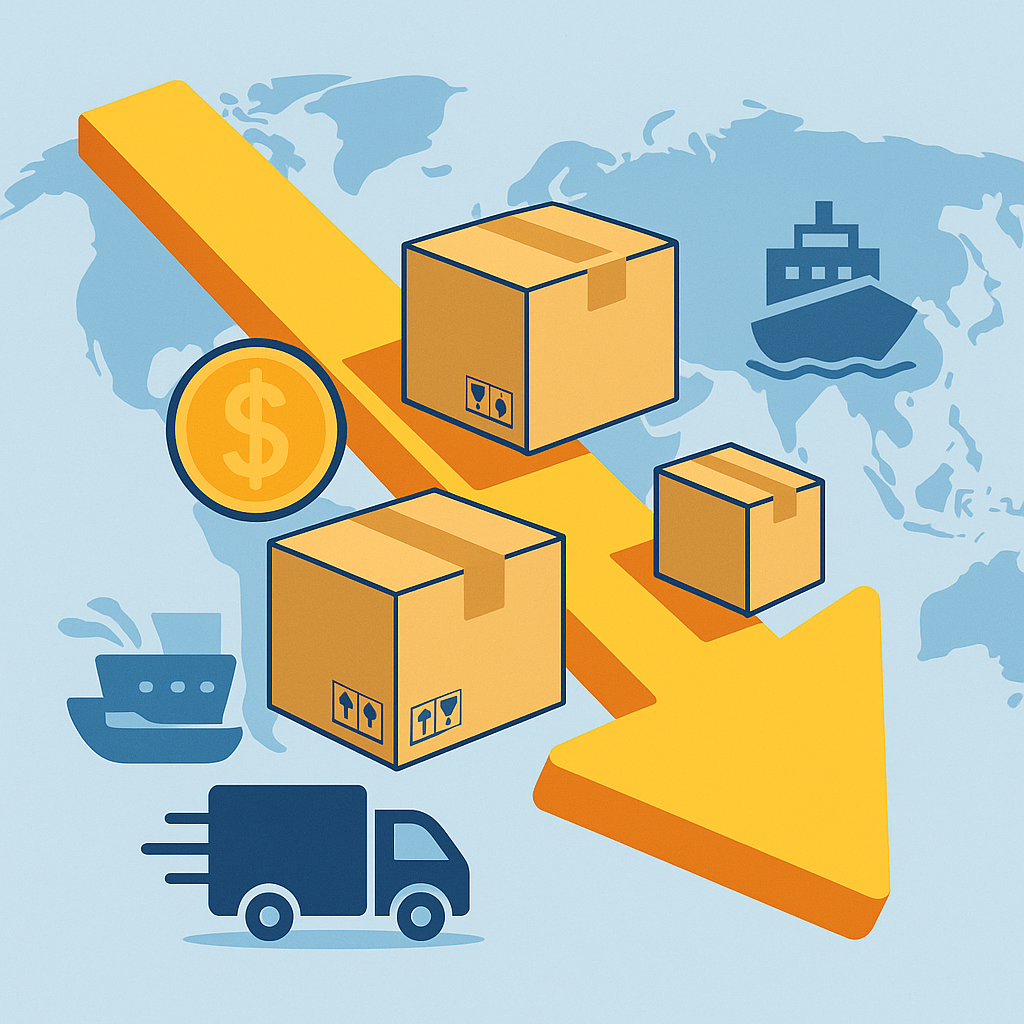Why it’s important to address shipping costs
What makes shipping expensive?
A number of variables influence the final cost to get goods from point A to point B:
- Size and weight: Carriers charge by dimensional weight, so shipping oversized or heavy parcels increases fees.
- Distance: The farther a package travels, the more fuel and handling are required.
- Speed: Faster services command premium rates. Overnight delivery is far more expensive than economy shipping.
- Destination and customs: Remote locations and international routes involve more complex logistics and regulatory fees.
- Packaging efficiency: Using boxes that are too large or heavy raises dimensional weight and leads to higher charges
- Carrier pricing models: Each carrier has its own fee structure, surcharges and discounts.
- Fuel and surcharges: Fuel price volatility and surcharges can swing shipping costs dramatically.
- Order volume: Larger, consistent volumes unlock better rates with carriers
- Import duties: International shipments may attract taxes, tariffs and clearance fees.
Understanding these cost drivers enables you to target savings strategies where they will have the greatest impact.
Innovative ways to lower your shipping costs
Design smarter delivery routes
Leverage carrier relationships
While published rates provide a baseline, carriers often negotiate bespoke pricing for high‑volume or long‑term clients. Analyse your shipping patterns to demonstrate consistency and growth potential, then invite carriers to compete for your business Multi‑year contracts with guaranteed minimum volumes can secure lower per‑parcel rates and protect your business from seasonal price spikes. Don’t forget to ask for value‑added services—such as real‑time tracking or weekend delivery—as part of the package.
Consolidate orders and streamline schedules
Rethink packaging
Match service level and carrier to the shipment
Bring fulfillment closer to your customers
Use data and automation to find hidden savings
Partner with experts
Emerging trends and bonus tips
- Plan ahead: Booking freight early avoids last‑minute premiums and allows more time to find the best rates.
- Embrace multimodal shipping: Combining ocean, rail and road transport can be cheaper and more sustainable than relying on air freight alone.
- Offer flexible delivery options: Give customers the choice between economy, standard and expedited shipping so they can select a cost/speed balance that suits them.
- Align your shipping policy with margins: Setting free‑shipping thresholds slightly above your average order value encourages larger purchases while covering shipping expenses.
- Invest in sustainable practices: Eco‑friendly packaging and carbon‑neutral carriers not only reduce your environmental impact but can also attract cost‑conscious, environmentally aware shoppers.
Conclusion
Cutting shipping costs in 2025 requires more than one quick fix; it calls for a holistic review of your supply chain. By understanding the factors that drive freight expenses, leveraging technology to optimise routes and packaging, negotiating proactively with carriers and reconfiguring your network, you can significantly reduce logistics spending. The payoff isn’t just higher margins—it’s improved customer satisfaction, better sustainability credentials and greater agility in a competitive market.
